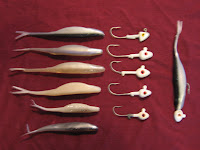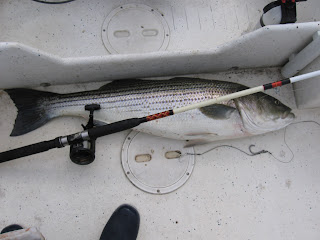Starting at the end of summer and into fall my motor was giving me problems. The fall fishing was a total waste for me. The fish were in, I know because I had to fish from shore and watch huge schools of fish and birds feeding on bait along the Rhode Island coast. It was so frustrating, what torture. There I am fishing from shore watching the carnage out in front of me and only getting a fleeting chance at fish that move in close from time to time. Boy was my blood boiling. So I made the choice to repower. My motor is 10 yrs old and I assumed that repairs would get to be routine at that age and I didn’t want to go through the same frustration in the spring.
The Hunt for the right motor:
O.K. so I made the decision to repower now it was time to hunt for a motor at a reasonable price. I have this thing about getting the right deal. Whenever I buy a large ticket item like a car or washer I research, research, research to find the best product at the right price. It is usually a lot of work but it being winter and me not using the boat I figured I had the time. So I began calling around and researching prices on the Internet I must have phoned or emailed at least 10 different local marinas/ Stores. I even considered Ed’s marine superstore in Virginia, or ordering a motor from Boats.net in Florida and having it shipped and installed up here. It was while I was searching on the internet that I came across Bass Pro Shops (Tracker Boats) repower specials.
The search ends at Bass Pro Shops:
I had no idea Bass Pro did repowering. I thought they only sold boat packages. If you go to the Bass Proshops site (Tra
 cker Boats) they boast that they are the number one Mercury dealer in the world. That's a pretty big claim and if you’ve lived as long as I have you get pretty skeptical of big claims, but I decided to give them a try. I went down to the store in Foxborough and spoke with Blake Phillips. He was very courteous, professional, and knowledgeable. There was no sales pitch, meeting in different rooms, or high pressure tactics like you’d get at a car dealer, just 2 guys talking about repowering a boat. After some back and forth I realized that they had the best price on a midrange 90 hp by far. No one else could come close. So I decided to order it, but in the back of my mind was that little skeptical voice saying how are they going to make up for the engine price, hammer me with an outrageous installation fee?
cker Boats) they boast that they are the number one Mercury dealer in the world. That's a pretty big claim and if you’ve lived as long as I have you get pretty skeptical of big claims, but I decided to give them a try. I went down to the store in Foxborough and spoke with Blake Phillips. He was very courteous, professional, and knowledgeable. There was no sales pitch, meeting in different rooms, or high pressure tactics like you’d get at a car dealer, just 2 guys talking about repowering a boat. After some back and forth I realized that they had the best price on a midrange 90 hp by far. No one else could come close. So I decided to order it, but in the back of my mind was that little skeptical voice saying how are they going to make up for the engine price, hammer me with an outrageous installation fee? The Bottom Line:
The Bottom Line:Well I got a call recently the motor was in. So I headed down to settle the price of the new motor, removal of my old motor, installation of the new motor, prop, tach, trim guage, everything hooked up ready to run with my old motor crated. All I have to say is WOW! Not only was the price of the motor less than other dealers, the price of the installation and removal was ½ what other dealers wanted to charge. The whole price was from $2000-$2500 less than other dealers wanted. I’m truly impressed with their sales and service departments and I’m not that easy to please. It appears their claims were true. So if you’re thinking of repowering give them a call or send them an email. Tell them Steve Pickering sent you.



















 Storm Wildeye Shad- I’ve caught more 20”-35” stripers on these than any other lure. They are fabulous; the best colors are shad and blue. Unfortunately they no longer make the blue, but Calcutta makes one that I’ll be trying out this year. The best size is 4”, they can be cast and retrieved or jigged/bounced off the bottom. Stripers go crazy over them but like all plastics better have a lot of them because any blue will make a mess of them with just one hit. More and more companies are making this type of bait and they seem be here to stay.
Storm Wildeye Shad- I’ve caught more 20”-35” stripers on these than any other lure. They are fabulous; the best colors are shad and blue. Unfortunately they no longer make the blue, but Calcutta makes one that I’ll be trying out this year. The best size is 4”, they can be cast and retrieved or jigged/bounced off the bottom. Stripers go crazy over them but like all plastics better have a lot of them because any blue will make a mess of them with just one hit. More and more companies are making this type of bait and they seem be here to stay. Swimmers -I almost exclusively use Bomber swimmers. They are tough and effective. They’re not usually as effective as soft plastics on stripers however blues cant chop them up. The only
Swimmers -I almost exclusively use Bomber swimmers. They are tough and effective. They’re not usually as effective as soft plastics on stripers however blues cant chop them up. The only 

 Live lining rigs- When it comes to live lining pogies I usually pre rig a bunch of
Live lining rigs- When it comes to live lining pogies I usually pre rig a bunch of




















